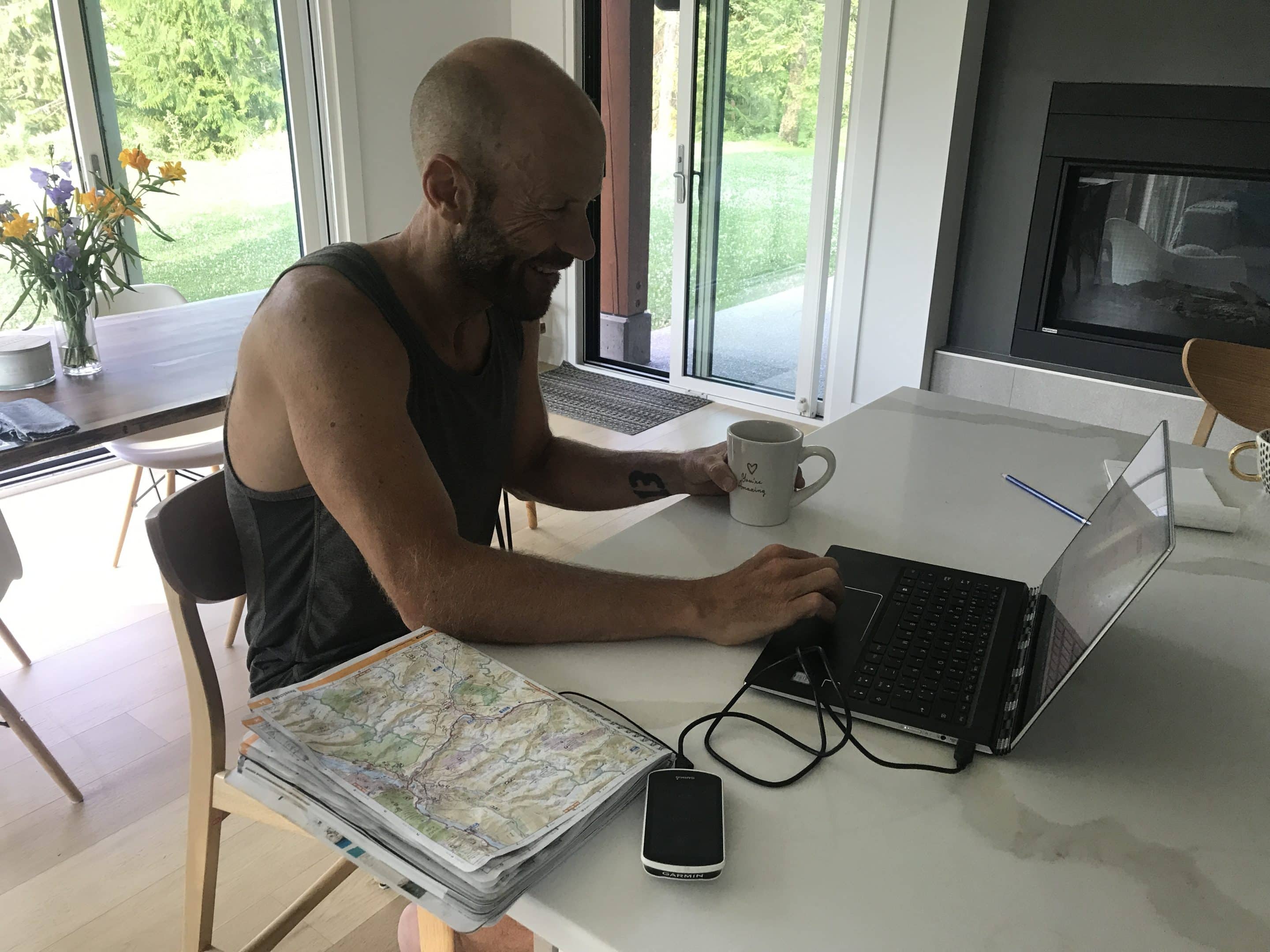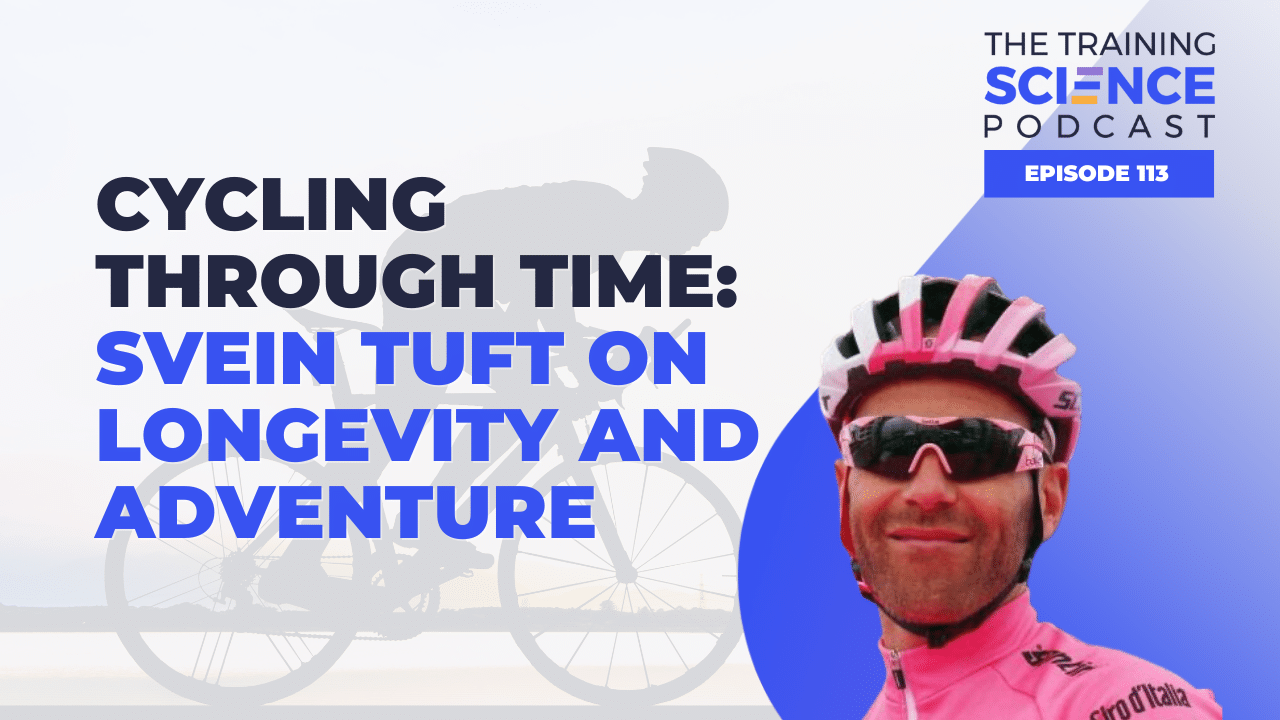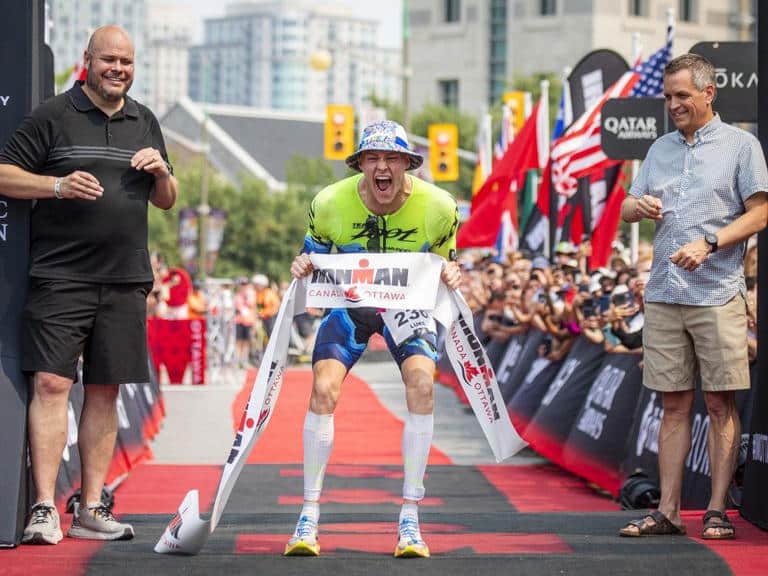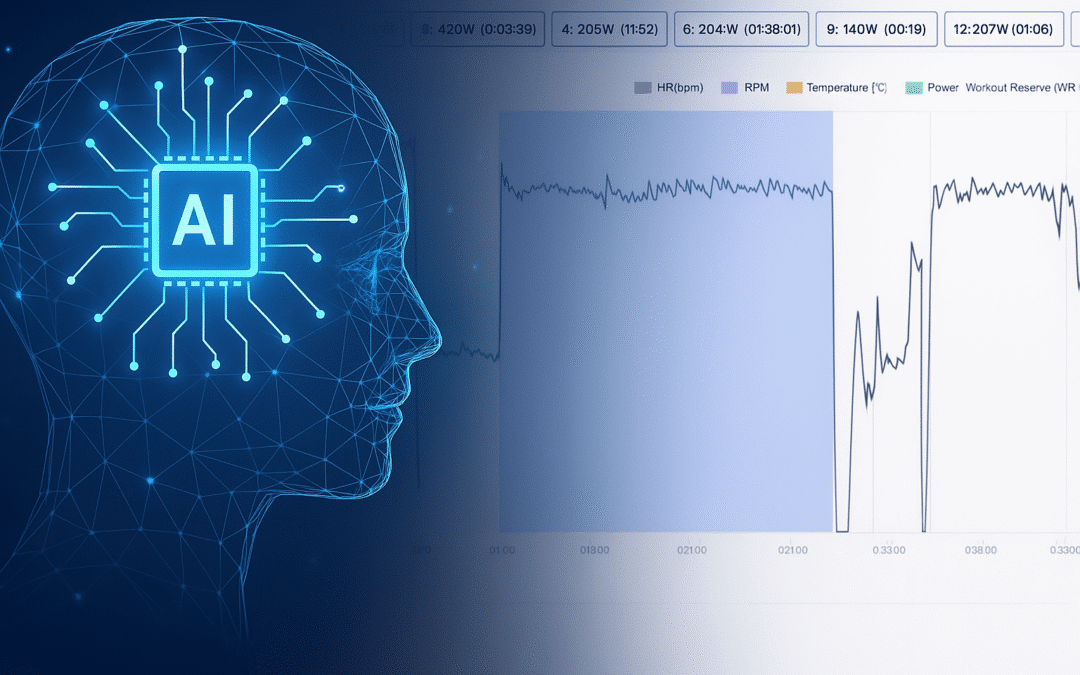I started writing a newsletter release based on the recent podcast I did with Grand Tour cyclist Svein Tuft. But it was getting out of hand. There were just too many pearls delivered across that short 70 minutes that I needed to write a more extensive blog post. So here it is.
A fellow BC boy, growing up not far from me and training on the same roads, it’s been easy to connect with Svein when we were introduced by our mutual colleague Marc Quod (Author of the HIIT Science cycling chapter and Svein’s former coach). Svein’s cycling accomplishments speak for themselves.
So you can imagine my excitement when Svein was in town on a reconnaissance mission looking for new uncharted routes for his Tuft Camps project. Of course, he was going to stay with me and I was going to tag along, right?

Svein scoping possible adventure routes in the area.
But what was even cooler about the experience was how aligned we are with everything to do with performance, health, and longevity. And hopefully, that comes out in the podcast. Svein isn’t your ordinary cyclist. He came to the sport by accident and made important observations along the way.
His story is epic, but if you want the TLDR take aways for performance, health and longevity, here are some of the pearls I took from it.
1. Diet and Nutrition Fundamentals
- Svein Tuft on early diet habits: “In the beginning, it was just calories, just whatever. And I was very poor. Carbohydrates are cheap, you know? It’s why the world is fat in my opinion because it’s the cheapest form of most available food and especially the refined form of it.”
- Discovering the importance of fat as a fuel: “If you have the ability to burn fat as a fuel more, we have so much fuel… And then also to raise that threshold of where you’re still burning fat, you just have more energy for the punch, and that’s what road cycling is.”
And that’s what he did. Check out this graph that shows the progress and shifted experience as an elite cyclist transitions from cheap, eat-everything carb calories to a low-carb approach, to a polarized and metabolically flexible one. Notice that the low-carb approach (yellow) isn’t necessarily limiting the maximal mean power (MMP) across a season (in fact some MMPs go up), and notice the supercompensation effect of MMPs with the metabolically flexible periodized approach (train high and low).

2. Metabolic Flexibility
- Svein Tuft on metabolic flexibility: “I started grasping that concept much better. I was like, okay, well, I can’t do this all the time. In the off-season when I’m at home, this is how I primarily eat. Under big training load, I kind of preload and backload the carbs.”
- The right approach to low-carb diets: “You start understanding the nutrition side and you start to dabble with that a little bit and you see the effect… The trick is understanding what’s going on and then the delayed response of things that are in play.”
And that’s the key. Many are not patient enough with the response and unwilling to hang tight during the adaptation phase to see if anything comes out on the other side. An Athletica user discovering this for himself late for the first time writes to me:
“I’m on this new journey of reducing carbs during training. I’m crushing it but it’s still a puzzle to figure out. I held very high power on an over-under set and then on a run off at 70.3 pace. I could handle the high zone 4 HR and pace. I wish I knew this earlier. I basically think I short-circuited my development when I was doing 50 to 80 grams of carbs per hour all the time.”
Yep – we’ve all been there.
But balance is key remember. Just like high carb can be a problem, low carb and under-fuelling can also be a problem under high training loads. Let’s hear from Svein.
3. Challenges and Learning
- Svein Tuft on training camps and nutrition: “We’d be at this training camp… and athletes would show up at the first race of the year, lean as hell, fat percentage down to like three or four percent looking good, but they were just rubbish in the race.”
- Balancing carbs and fats: “I started coming up with my own ways of mitigating that and coping with that. I still ate the white rice, but in the quantities that I understood were what I needed for the day, keeping it on the lower end.”
Fast forward to now, of course, as we age, it’s more about health and longevity. Here we are in the wet of the BC mountains doing 6 hours plus on gravel. Despite the challenges, its more or less a zone 2 low day. What held us all day for the most part? 4 fried eggs.

And on the topic of health and longevity; while we often think about athletes being at the top of their game as the healthiest people on the planet, for many, nothing could be farther from the truth, in fact. Let’s hear again from Svein.
4. Principles for Longevity and Wellness
- Svein Tuft on long-term health: “I saw the guys that were coming out on the other side and they were just buckled… Their DEXA scan tests showed like a bone density of an 80-year-old osteopenic woman.”
- Holistic approach to health: “I still ski tour, I still hike, I still go running in the mountains most of the time. And then I do this thing that I love, racing was the byproduct of that.”
- Nutrition for life: “I started understanding how nutrition had such an impact on not only your performance but also over a lifetime, like insulin resistance and things like that.”
5. Practical Tips
To close this post, Svein leaves us with two additional practical tips that we can all take into our own lives —ones we don’t always hear about.
- Svein Tuft on staying grounded during tours: “I would walk down to the beach, get in the sun, even before a 200K stage… get grounded, barefoot, most skin exposure possible, and do some activation, i.e., yoga.”
- Svein Tuft on hydration: “I would see these guys training… and I’d see them, it’d be four degrees raining outside. They’ve clearly got a sore throat and they’ve got six hours on the schedule that day. And I’m thinking like, is that going to do you any good right now?”
Across most contexts, health and holism should win out, and we should strive to be mindful and listening to our bodies. Consider the big picture context and make smart choices.
Load of other pearls in there too… so be sure to check out Svein’s podcast for the complete story here.







